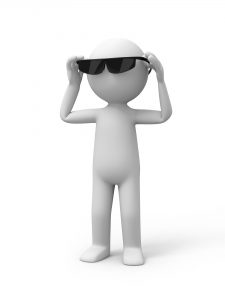 Light sensitivity (photophobia) means that the person experiences discomfort/distress/pain in response to normal levels of light or glare. The person experiences the light as ‘too much’. This may impact on the person’s ability to tolerate bright days, fluorescent lighting, computer screens as well as the moving pictures and changing light levels of a T.V. Reported symptoms may also include eye-strain and headache/migraine.
Light sensitivity (photophobia) means that the person experiences discomfort/distress/pain in response to normal levels of light or glare. The person experiences the light as ‘too much’. This may impact on the person’s ability to tolerate bright days, fluorescent lighting, computer screens as well as the moving pictures and changing light levels of a T.V. Reported symptoms may also include eye-strain and headache/migraine.
It is important to recognise that there may be a number of significant contributory factors in the development of light sensitivity following brain injury. This may include one or more of the following:
- Visual impairment.
- Dry eyes and dry eye syndrome.
- Perceptual impairment.

- Difficulties with attention and information processing.
- Psychological and psychiatric difficulties e.g. high levels of anxiety.
- Behaviour which reinforces the problem e.g. wearing tinted lenses/sunglasses may increase sensitivity to light and further compound the problem.
- Consider other potentially important causative medical conditions and contributory factors.
How to Help:
- A clear management plan is
 required. This is best supported by professionals with relevant experience e.g. brain injury specialist, Ophthalmologist, Clinical Psychologist.
required. This is best supported by professionals with relevant experience e.g. brain injury specialist, Ophthalmologist, Clinical Psychologist. - Provide reassurance and explanation.
- Refer for an eye test.
- Make sure the person has the correct prescription for spectacles and wears them.
- The wearing of tinted lenses/sunglasses in normal light conditions/indoors is likely to exacerbate the problem and increase sensitivity and should be avoided unless specifically advised by a relevant professional.
- Treatment should be initiated for those people with severe photophobia who have persistently avoided normal light levels and have become habituated to low light levels i.e. a ‘dark adapted state’. Supporting these people will require assistance from specialists to advise about implementing a desensitisation programme.
- A desensitisation programme of controlled and increasing exposure to the uncomfortable stimuli is likely to be the most effective treatment. However if cognitive difficulties are a significant contributory factor, then an alternative management approach may be required. Seek out specialist advice e.g. from brain injury specialist, Ophthalmologist, Clinical Psychologist.
- Some people may benefit from relaxation training. Specialist support will be required.